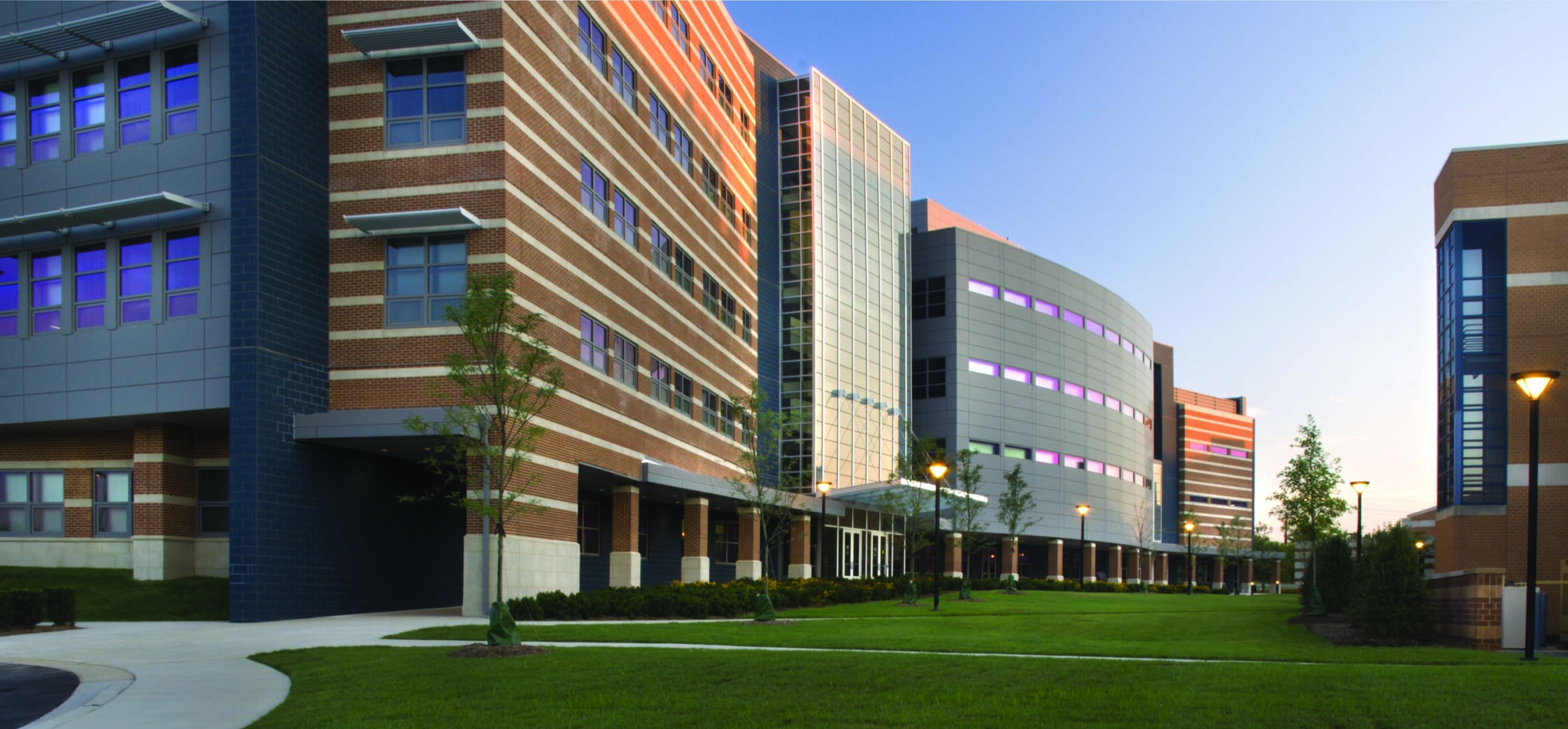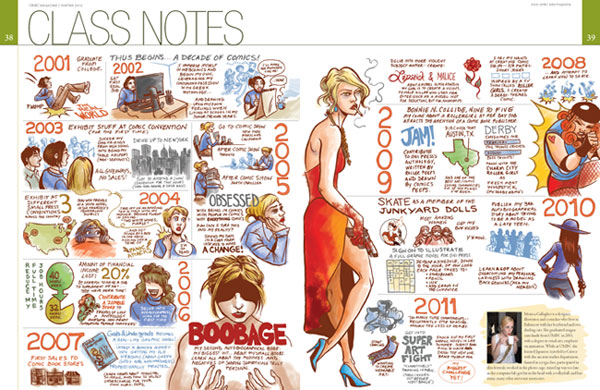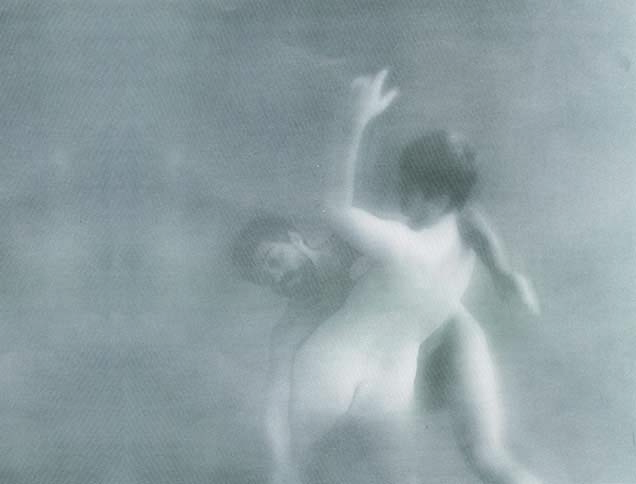CENTER OF ATTENTION
When the Universities at Shady Grove (USG) opened in Montgomery County in the fall of 2000, the project was an innovative concept in higher education: a place where part-time students could attend classes offered by a variety of public institutions.
UMBC has been a key part of Shady Grove from the beginning, and this fall, UMBC celebrated its 10th anniversary as part of the endeavor, which has grown now into a state-of-the-art center offering more than 60 degree programs in partnership with nine University System of Maryland schools and serving more than 3,650 undergraduate and graduate students.
UMBC offers a wide range of degrees at the Shady Grove center, including bachelor’s degrees in management of aging services, history, political science, psychology and social work, and graduate degrees in industrial/organizational psychology and geographic information systems.
“Many of my students have responsibilities to their families and communities and are unable to pursue a traditional college route by leaving home,” says Katie Morris, program director of UMBC’s baccalaureate social work program at USG. “UMBC at Shady Grove allows them to pursue an excellent education and remain connected to their home community.”
UMBC plans to expand its role at USG, especially in science and technology – a development welcomed by USG Executive Director Stewart Edelstein.
“I look forward to the day when UMBC brings its mechanical engineering program to USG,” Edelstein says, “building on their nationally recognized success in graduating highly skilled scientists and engineers, specifically among minority student populations.”
— Gavin St. Ours
PHILANTHROPY MADE EASY
 Universities reach out to alumni and other donors in a number of ways. But with UMBC’s new giving website, you can track all the reasons that your philanthropy to the university makes a difference with a simple mouse click.
Universities reach out to alumni and other donors in a number of ways. But with UMBC’s new giving website, you can track all the reasons that your philanthropy to the university makes a difference with a simple mouse click.
The new website offers a wide sampling of the latest social media trends with a Retriever twist – including multimedia presentations, a Tumblr account that clues you to daily campus happenings and a new blog on giving.
The blog is where you’ll discover introductions to some of the UMBC students who work in the university’s recently opened Phonathon Center in Alumni House, find your name on the university’s online Donor Roll, meet some of the recipients of the scholarships that exist only because of the generosity of donors and see a slideshow of a recent dinner with President Freeman A. Hrabowski, III that the university hosted for The 1966 Society – UMBC’s community of those who’ve made planned gifts to the university.
UMBC’s giving website also has a comprehensive FAQ page (What’s a gift-in-kind?) and a link where you can make your donation whenever the impulse to give back to UMBC strikes you.
The larger world of university communications has already taken note of UMBC’s new cyber-initiative. The website itself – which was designed by Jim Lord ’99, design director of UMBC’s Creative Services department, and Jenny O’Grady, director of alumni and development communications – won a 2012 Region II silver medal in the Website: Fundraising/Development category from the Council for Advancement and Support of Education (CASE).
— Richard Byrne ’86
AN AUTUMN TO REMEMBER
 UMBC and its president Freeman A. Hrabowski, III have gathered many kudos over the past few years both for the university’s innovations in increasing diversity in the so-called “STEM” fields (science, technology, engineering and mathematics) and for reshaping courses to improve student outcomes.
UMBC and its president Freeman A. Hrabowski, III have gathered many kudos over the past few years both for the university’s innovations in increasing diversity in the so-called “STEM” fields (science, technology, engineering and mathematics) and for reshaping courses to improve student outcomes.
But November and December 2011 brought an avalanche of attention to the achievements of the university and its president – including a prestigious award, a coveted feature on the award-winning CBS news magazine 60 Minutes and an invitation to the White House.
Early in November, Hrabowski was selected as the recipient of the Centennial Academic Leadership Award from the Carnegie Corporation. The Carnegie award brought with it a $500,000 prize, which UMBC’s president has given to the university to create a new Hrabowski Fund for Academic Innovation.
The new fund will help anchor UMBC’s successes in revising its curriculum, extend those efforts across the university, and further connect the school’s use of the power of technology and entrepreneurship to achieve those ends. (See “Up on the Roof”)
On November 13, American television viewers got to hear about UMBC’s success and the philosophy behind it from the university’s president himself. Hrabowski was interviewed by 60 Minutes correspondent Byron Pitts in a feature that focused largely on the university’s remarkable record in fostering minority achievement in the STEM fields through the Meyerhoff Scholars program and other initiatives.
But Hrabowski says that the response he’s received as a result of UMBC’s appearance on such a prominent national stage has been “much broader” than a celebration of UMBC’s prowess in one particular aspect of its mission.
“The 60 Minutes feature conveyed an old-fashioned message that hard work and discipline and structure and support can make a big difference,” Hrabowski observes. “That’s what people from all walks of life, of different ages and politics, whether they are in the field of education or outside of it, have said to me. UMBC is a place that really cares about students. So it wasn’t just a reaction about one specific issue, but more about the university’s approach to students – and that we expect the most from students – and that we are obtaining results that are among the most impressive in the country.”
It isn’t just a national television audience that’s taking notice. On the heels of the 60 Minutes appearance, Hrabowski was one of a select group of national college and university leaders (including the University System of Maryland’s chancellor, William E. “Brit” Kirwan) invited by President Barack Obama to the White House on December 5 to discuss hot-button issues of college affordability, productivity and innovation.
Hrabowski says that he’s still getting a lot of response to a very busy autumn. “I had not appreciated the power of the media,” he observes.
“Anywhere I go in the nation now – Charlotte, North Carolina, or Houston, Texas, or Chicago, Illinois – people say: ‘ 60 Minutes. UMBC.’”
— Richard Byrne ’86
Tags: Winter 2012



